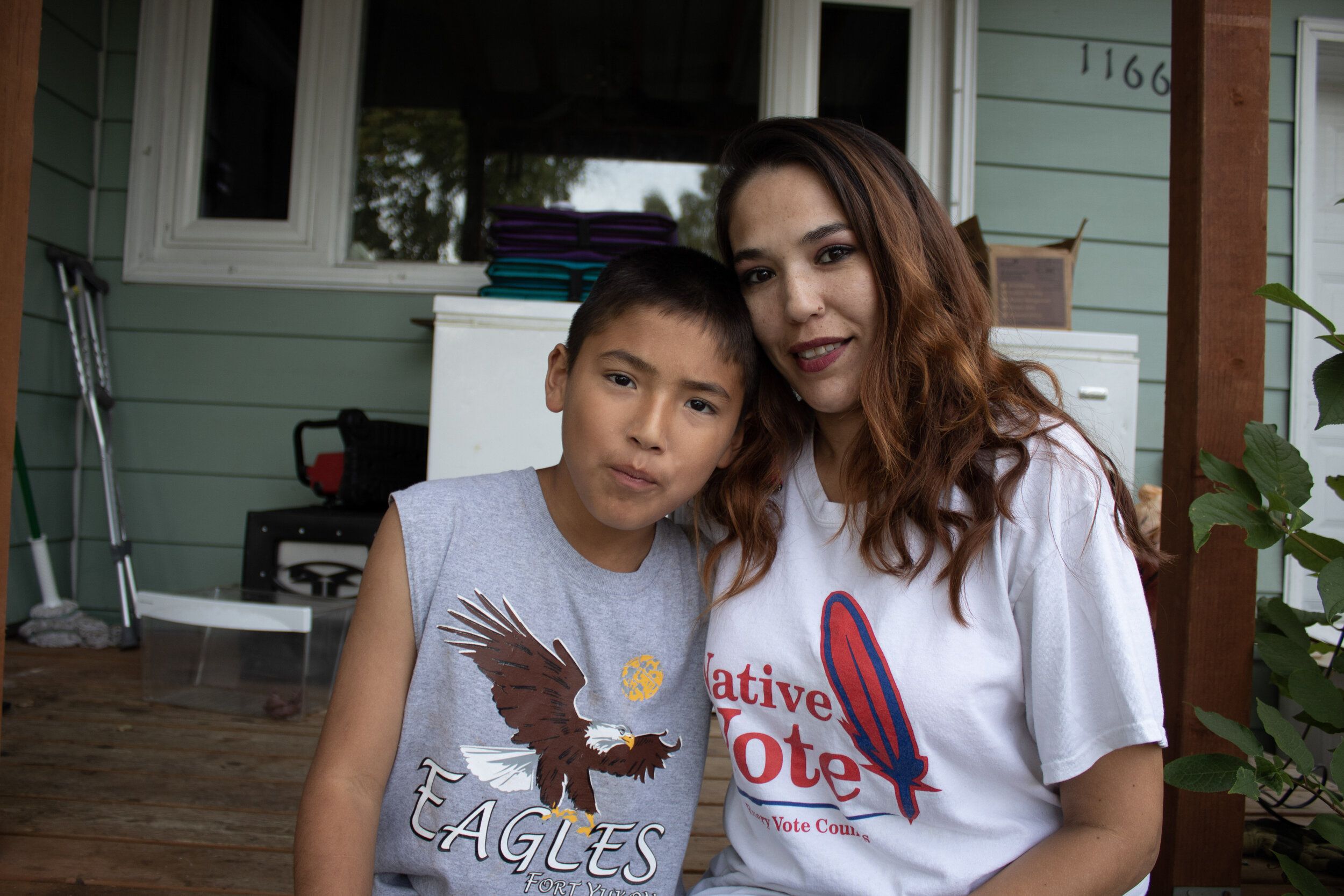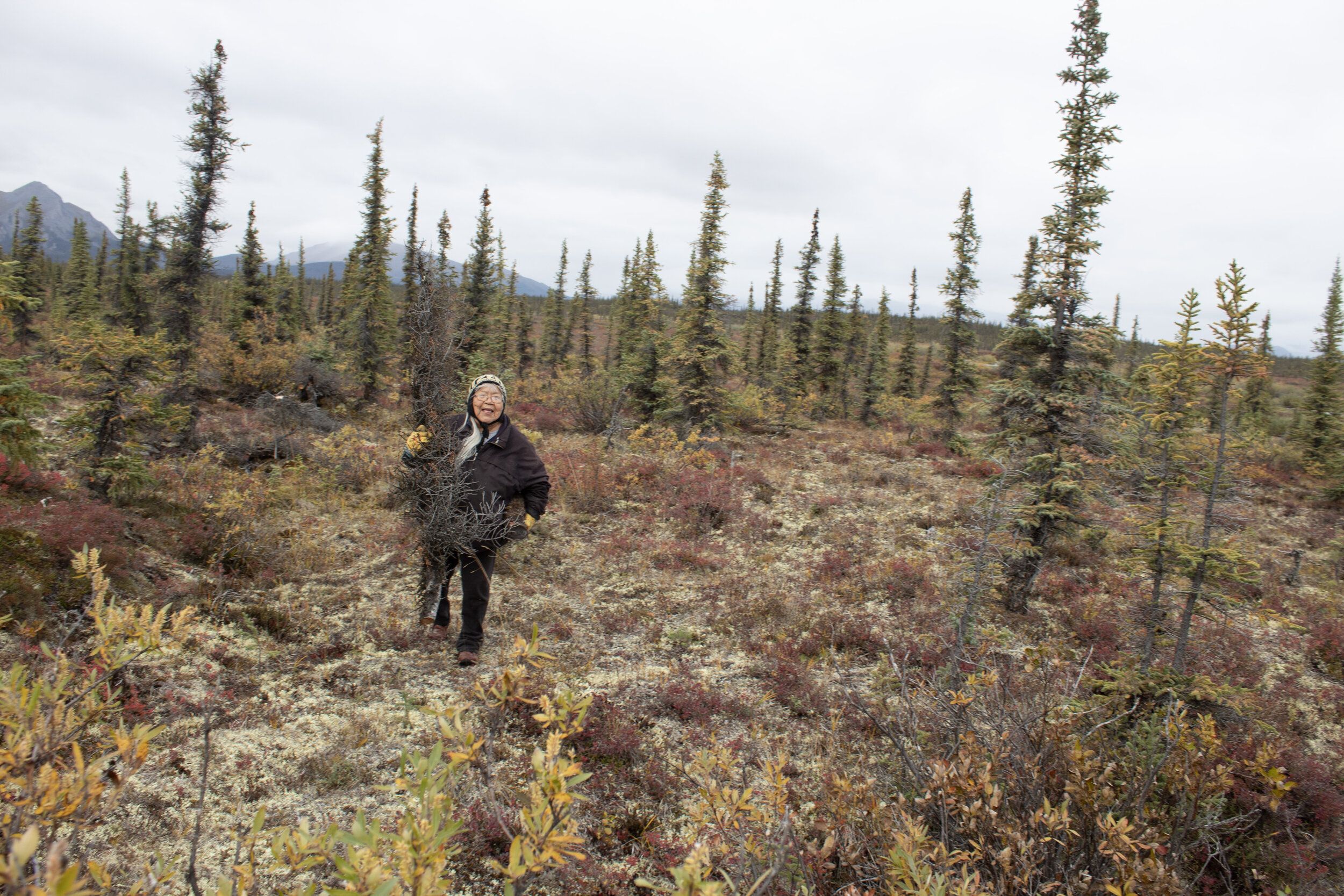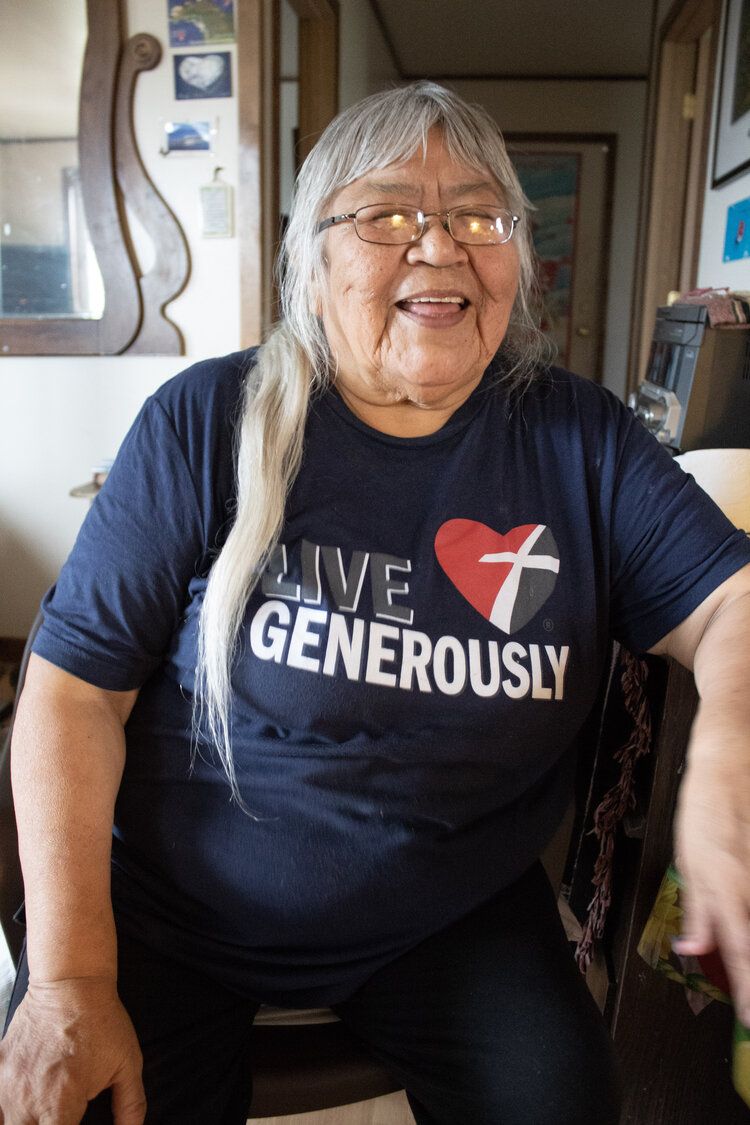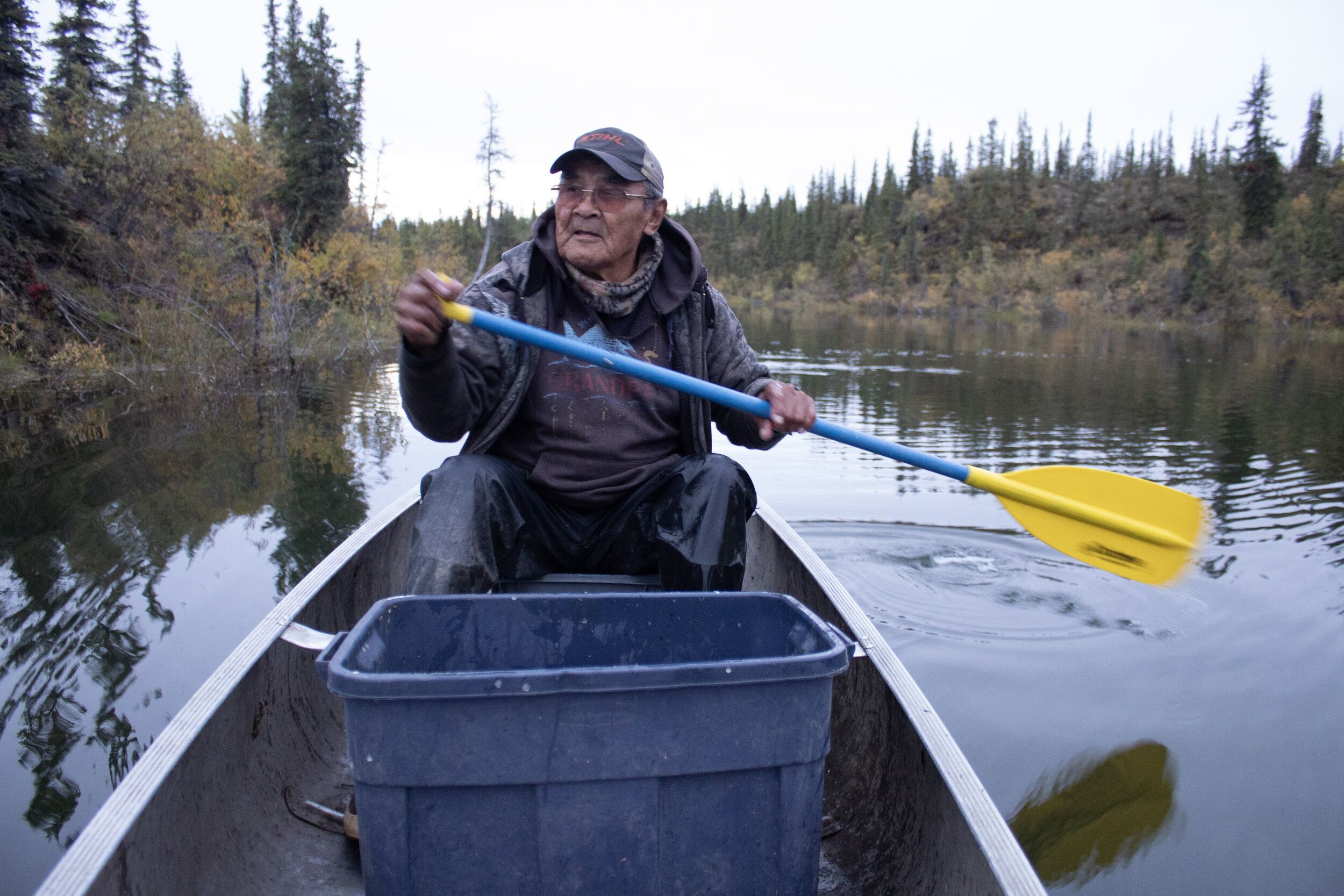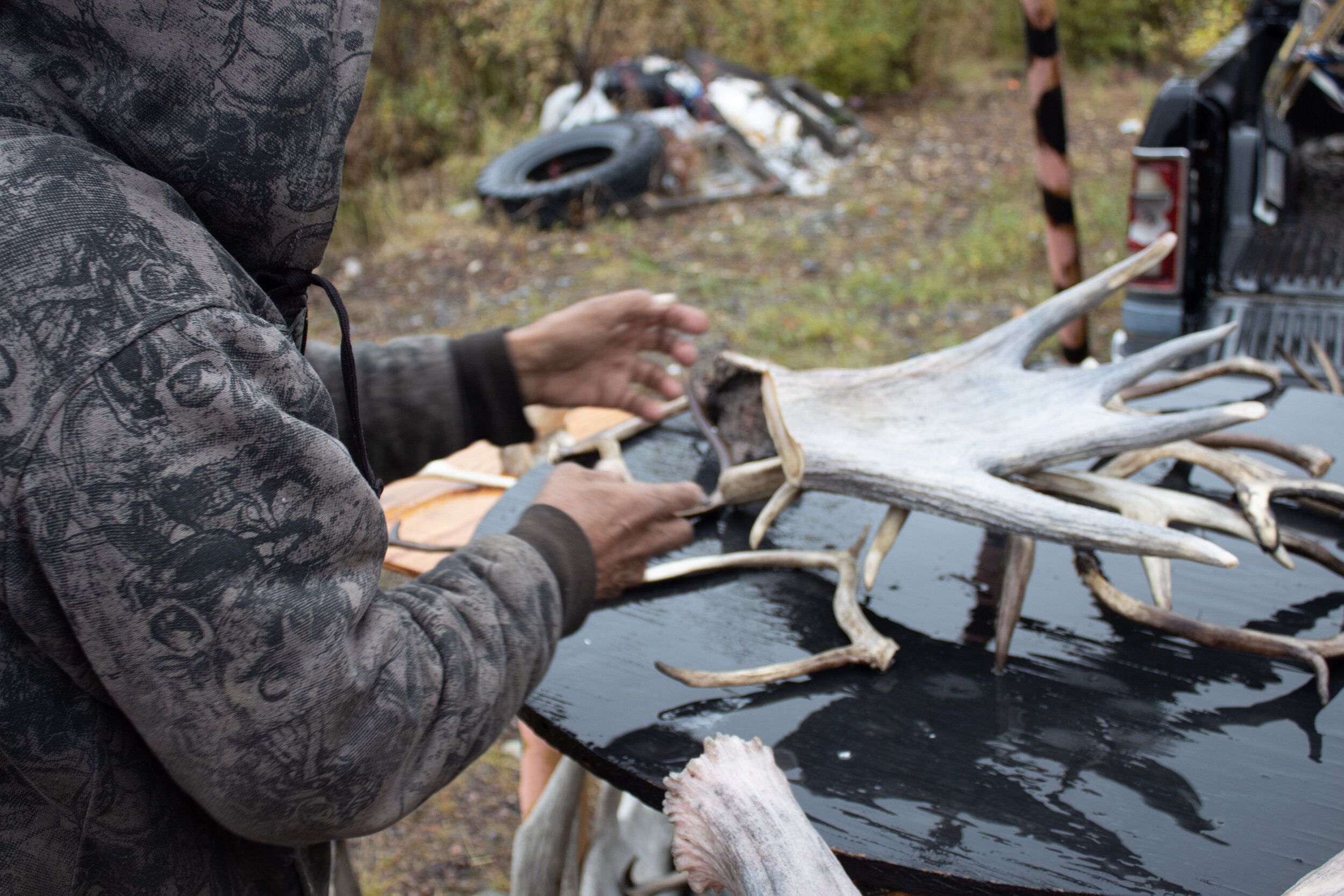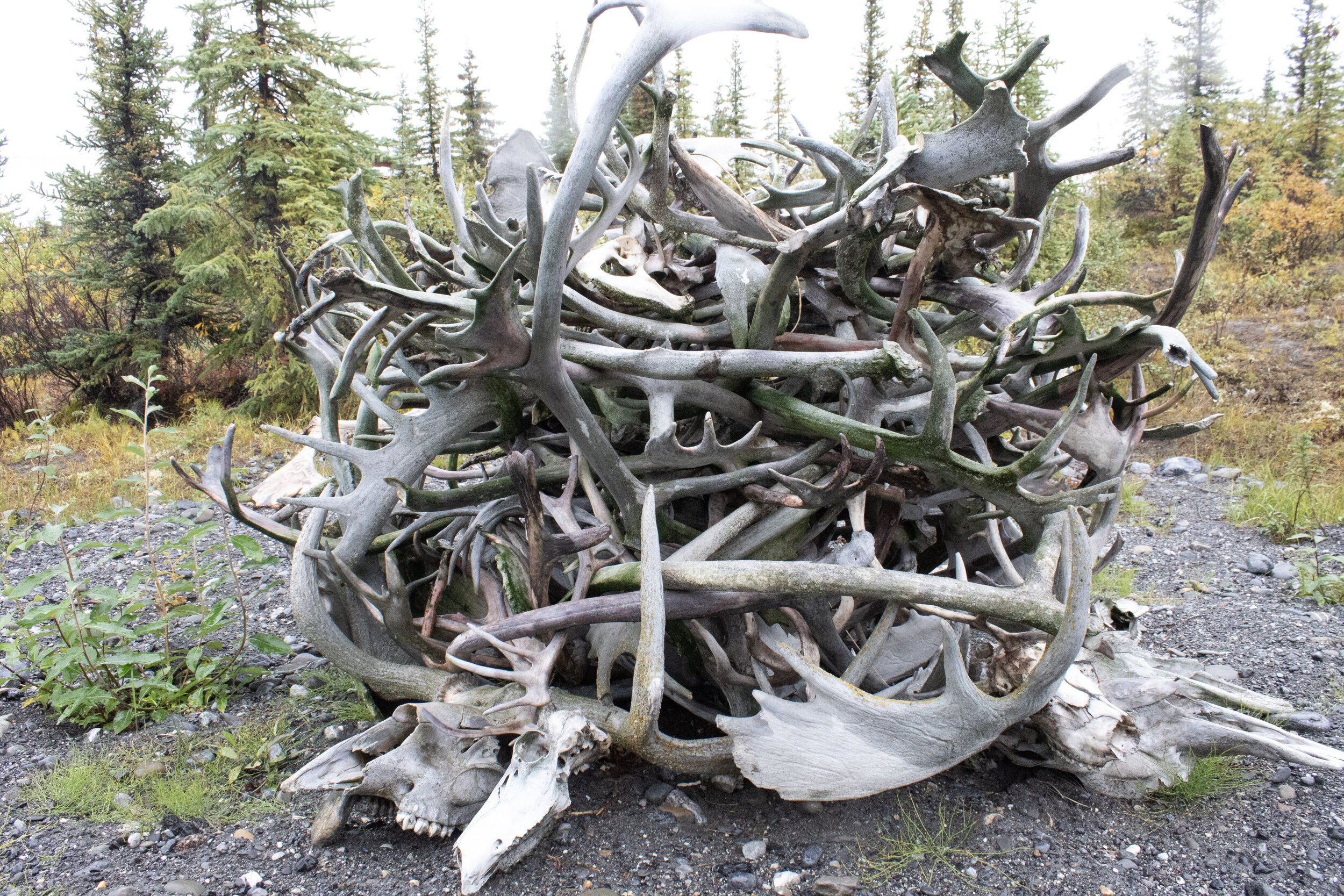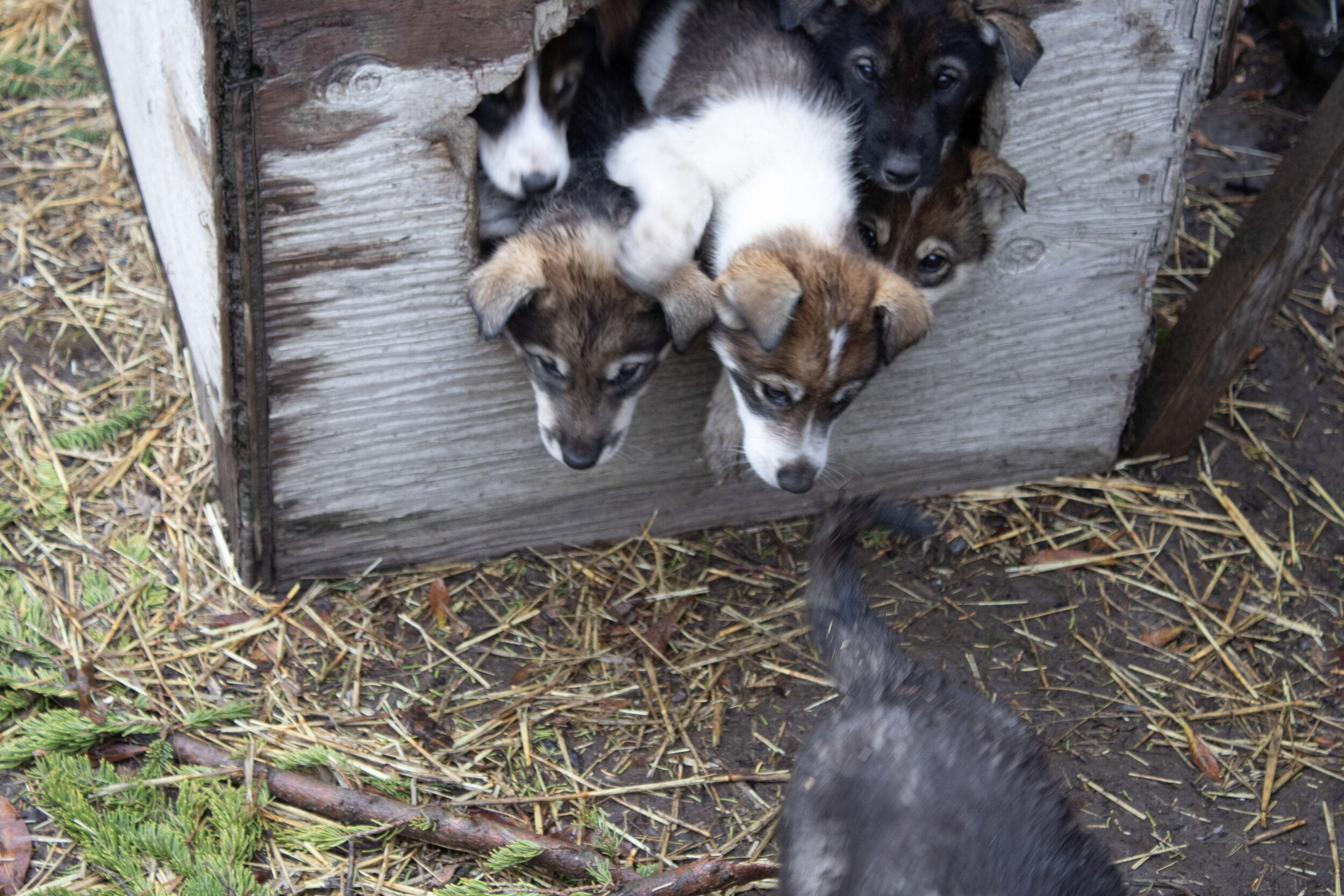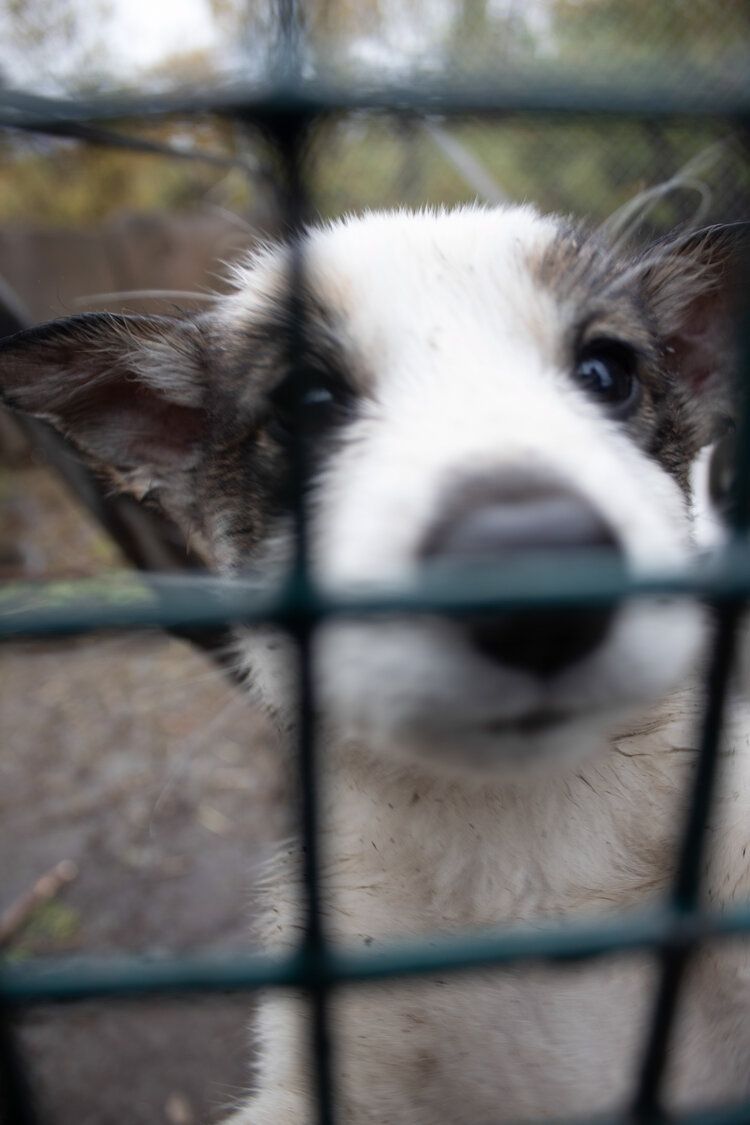The Gwich’in have lived and hunted in the Refuge long before it was carved out as federal, protected land. Their territory spans a huge swath of northeastern Alaska and northwestern Canada, and their health and culture depends on the Porcupine caribou herd—a group of animals 200,000 strong that calve on the area of the coastal plain slated for drilling.
In this two-part episode, spend time in Arctic Village, a community just over the southern border of the Refuge, and hear from the Gwich’in about what’s at stake for them as development looms in the 1002 area.
LEARN MORE
THE GWICH’IN
The Gwich’in people are part of the larger Athabascan family of tribes, whose land base covers a large swath of interior Alaska. While the Athabascans share membership in a regional band, local bands are of deep social importance too. For example, Sarah James, who we met in this episode, is a member and spokesperson for the Neets’aii Gwich’in, where she is also an elder.
This map shows the Athabascan, as well as several other Alaskan Native Culture Areas. To read more about Bluefish Caves and the archaeological history of the area, visit this article.
ADDITIONAL MAPS
Map and additional info about Arctic Village
ORGANIZING TO PROTECT THE CARIBOU
After years of advocacy, the Gwich’in, along with Iñupiaq people and other allies, succeeded in getting the U.S. and Canada to sign an international treaty designed to protect the Porcupine caribou herd.
That treaty also established the Porcupine Caribou Management Board, who went on to organize the 1988 gathering we covered in Part I. From June 5-10 of that year, people from all over the Gwich’n community, as well as other folks in support of caribou conservation, met up in Arctic Village to connect and strategize. You can view footage from the gathering here, in a video produced by Northern Native Broadcasting, Yukon. This is the resolution that came out of that gathering.
Bernadette Demientieff, who we also heard from in this episode, is a member of the Gwich’yaa Gwich’in. She is also the Executive Director of the Gwich’in Steering Committee, formed in 1988 in response to proposals to drill in the Arctic National Wildlife Refuge. The steering committee's 2012 formal resolution can be viewed here.
CARIBOU
Here you can read more about human threats to caribou populations. This article is a deeper dive on the science that has resulted from 38 years of caribou monitoring.
You can learn more about the caribou migration through the Canadian Parks and Wilderness Society’s Join the Migration project.
THE AMERICAN INDIAN MOVEMENT
The US government’s policies of “termination” and “relocation” consolidated many young Native people in major cities in the 1960’s. The consequences of these programs cannot be overstated (see Tommy Orange’s award-winning There There as a great starting point), but one of them was the rise of the American Indian Movement (AIM) and the Red Power movement, which took off in cities like Minneapolis and San Francisco. Primary sources on AIM can be viewed through the Digital Public Library of America, and for more reading on the powerful role of these two parallel movements, we recommend In the Spirit of Crazy Horse, The Heartbeat of Wounded Knee, and anything by Vine Deloria.
One of the biggest events to come out of this moment in Native American activism was the occupation of Alcatraz Island. SF Chronicle recently did a story on unpublished photos from the 19-month-long protest, and the National Parks Service has a brief history as well. For a more thorough history, we recommend Troy R. Johnson’s The Occupation of Alcatraz Island.
You can watch Richard Oakes reading the protesters’ initial proclamation here or read it in full.
The Red Nation is also a good resource for the ongoing struggle for Native rights.

